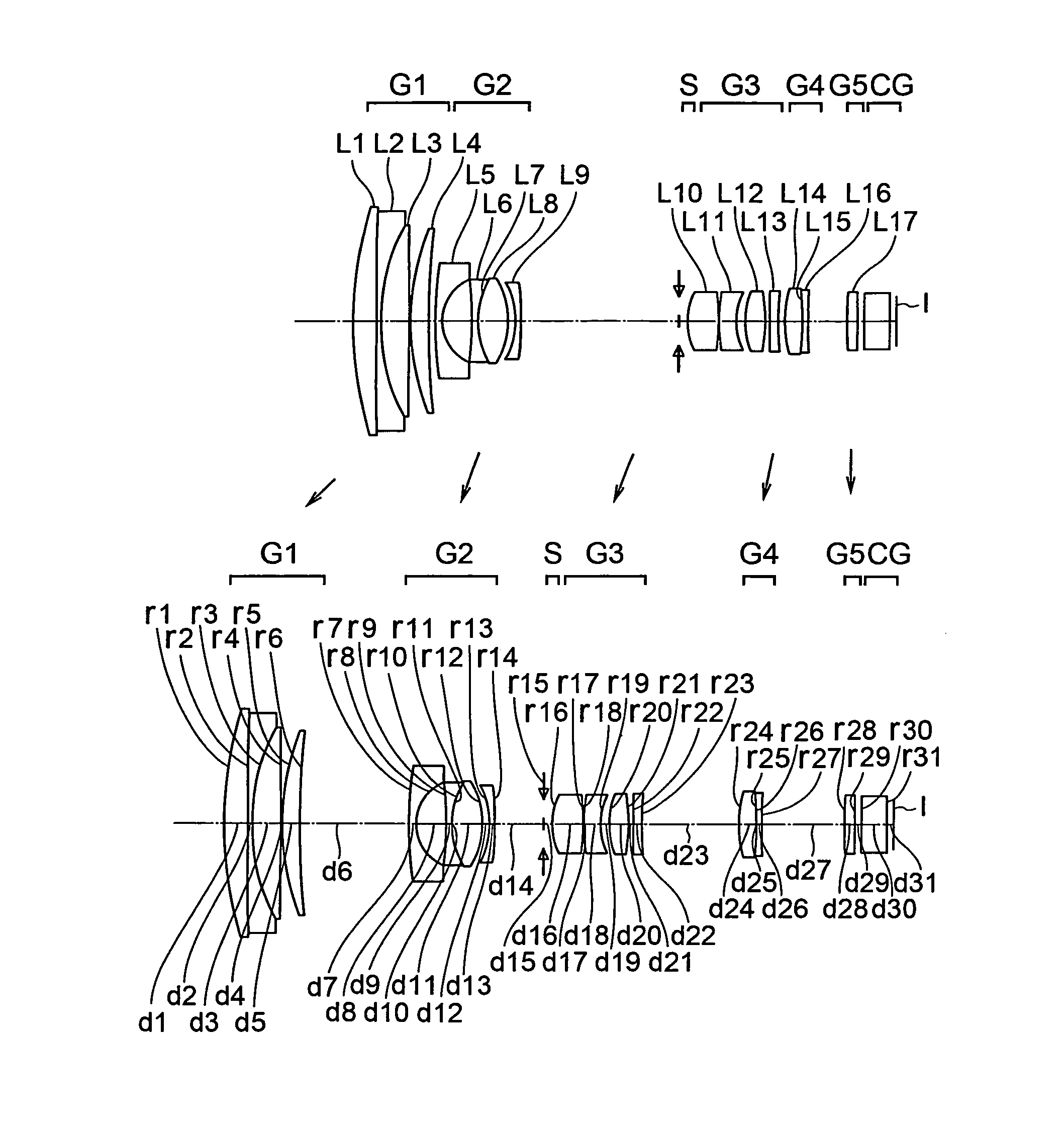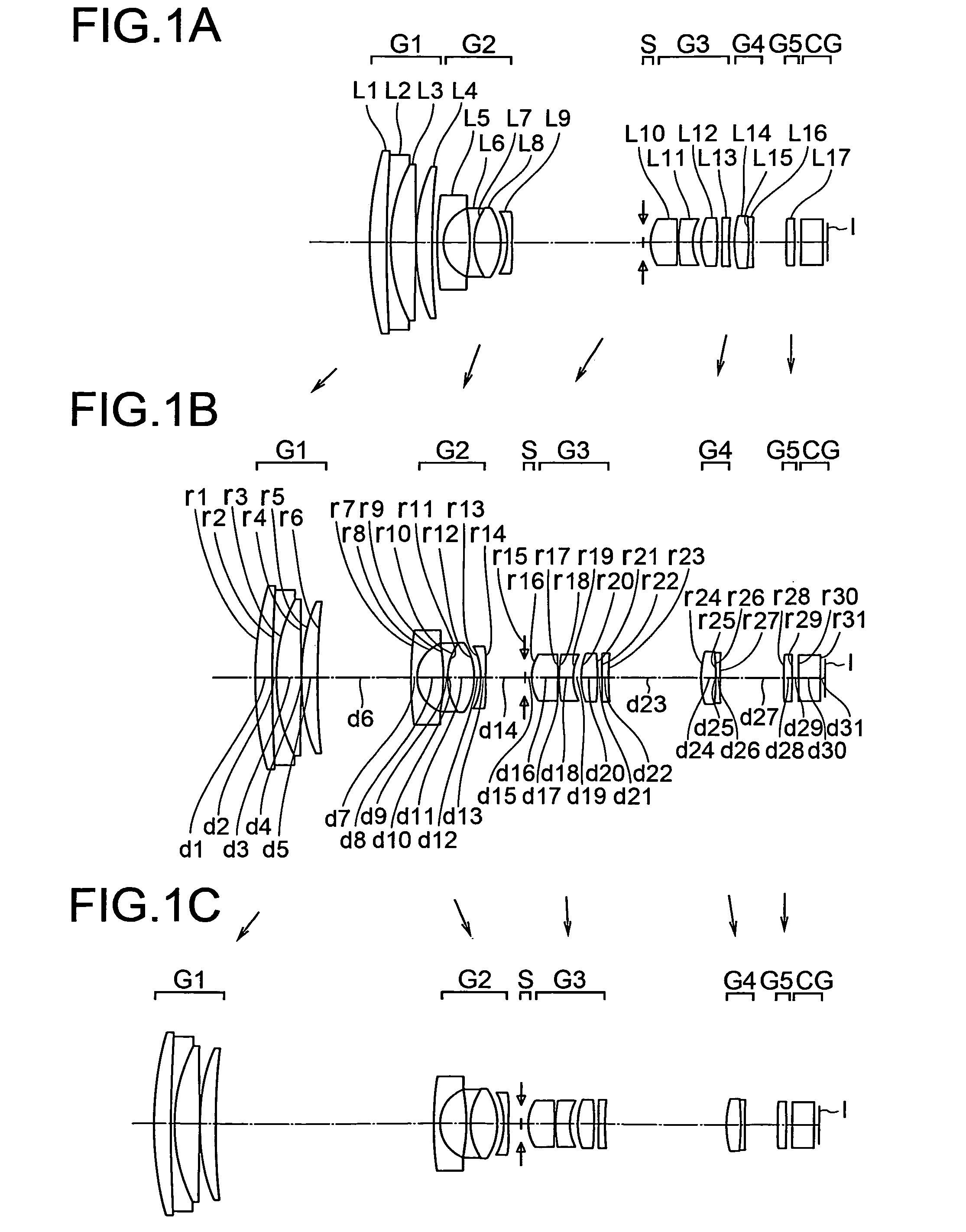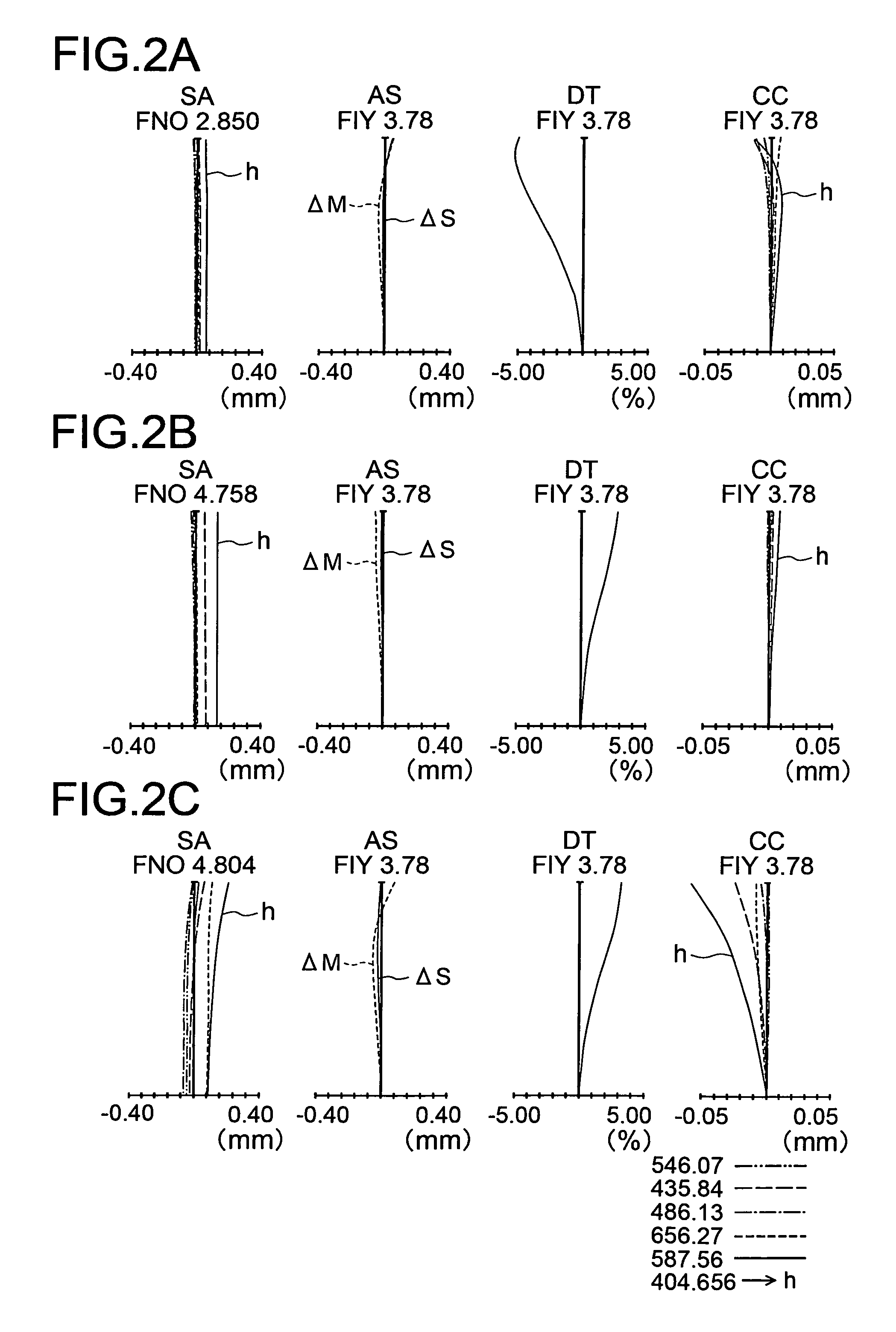Image forming optical system and electronic image pickup apparatus using the same
a technology of optical system and electronic image, applied in the direction of projectors, instruments, printers, etc., can solve the problems of chromatic aberration, and affecting the image quality of the image,
- Summary
- Abstract
- Description
- Claims
- Application Information
AI Technical Summary
Benefits of technology
Problems solved by technology
Method used
Image
Examples
example 1
[0288]
Unit mmSurface dataeffectiveSurface no.rdndνdradiusObject plane∞∞ 170.8092.961.6338723.3817.50 2230.8070.741.6349323.9016.71 334.4534.591.4970081.5414.83 4752679.4190.1014.70 543.4342.861.7880047.3714.29 6129.755Variable14.00 763.3261.101.8830040.768.71 87.2094.796.13 9−46.2540.801.8830040.766.021012.3960.011.5140042.836.031112.3964.871.7847225.686.0312−13.4111.156.1013−13.6020.801.7725049.605.5114*−679.809Variable5.5115(stop)∞1.303.6216*10.7434.931.5891361.144.2117−78.0510.104.251828.0412.771.8466623.784.241910.6321.423.992014.2303.121.4970081.544.2721−36.9850.644.3322*58.0771.361.5307155.694.3223*34.607Variable4.312419.1302.681.4970081.544.7325−119.0900.011.5140042.834.6026−119.0900.821.8040046.574.602776.031Variable4.5528*147.3741.631.5307155.694.1429*−67.9391.094.0630∞4.001.5168064.204.0031∞0.973.84Image plane∞Aspherical surface data14th surfaceK = 0.000, A2 = 0.0000E+00, A4 = −9.19823e−05, A6 = −8.80923e−07,A8 = 4.39702e−08, A10 = −1.24247e−0916th surfaceK = 0.000, A2 = 0...
example 2
[0289]
Unit mmSurface dataeffectiveSurface no.rdndνdradiusObject plane∞∞ 166.4983.651.6338723.3817.90 21176.0990.581.6349323.9017.13 333.2074.601.4874970.2314.83 41355.9880.1014.70 538.8992.781.6968055.5314.23 6120.085Variable14.00 763.3261.101.8830040.768.71 87.2094.796.13 9−46.2540.801.8830040.766.041012.3960.011.5140042.836.061112.3964.871.7847225.686.0712−13.4111.156.1413−13.6020.801.7725049.605.5814*−679.809Variable5.5915(stop)∞1.303.7916*10.7434.931.5891361.144.3917−78.0510.104.401828.0412.771.8466623.784.381910.6321.424.102014.2303.121.4970081.544.3521−36.9850.644.4022*78.2471.361.5307155.694.3723*34.607Variable4.372419.1302.681.4970081.544.8025−119.0900.011.5140042.834.6726−119.0900.821.8040046.574.672776.031Variable4.6228*147.3741.631.5307155.694.1329*−67.9061.094.0530∞4.001.5168064.203.9931∞1.093.84Image plane∞Aspherical surface data14th surfaceK = 0.000, A2 = 0.0000E+00, A4 = −9.41129e−05, A6 = −3.64343e−07,A8 = 6.43993e−09, A10 = −6.00440e−1016th surfaceK = 0.000, A2 = 0....
example 3
[0290]
Unit mmSurface dataeffectiveSurface no.rdndνdradiusObject plane∞∞ 167.5962.711.6338723.3817.50 21210.5120.771.6349323.9017.19 333.5154.581.4874970.2314.85 4108051.9580.1014.70 538.1442.791.7291654.6814.24 6110.004Variable14.00 761.2051.101.8830040.768.89 87.2224.796.21 9−46.2540.801.8830040.766.141012.3960.011.5140042.836.181112.3964.871.7847225.686.1812−13.4111.156.2613−13.6250.801.7725049.605.6814*−663.540Variable5.7015(stop)∞1.303.7716*10.7434.931.5891361.144.3617−78.0510.104.361828.0412.771.8466623.784.351910.6321.424.062014.2303.121.4970081.544.3121−36.9850.644.3522*95.1991.361.5307155.694.3323*34.607Variable4.322419.1302.681.4970081.544.7625−119.0900.011.5140042.834.6326−119.0900.821.8040046.574.632776.031Variable4.5828*147.3741.631.5307155.694.1229*−67.9391.094.0430∞4.001.5168064.203.9831∞1.103.83Image plane∞Aspherical surface data14th surfaceK = 0.000, A2 = 0.0000E+00, A4 = −9.24299e−05, A6 = −5.56887e−07,A8 = 1.22900e−08, A10 = −6.66277e−1016th surfaceK = 0.000, A2 = ...
PUM
 Login to View More
Login to View More Abstract
Description
Claims
Application Information
 Login to View More
Login to View More - R&D
- Intellectual Property
- Life Sciences
- Materials
- Tech Scout
- Unparalleled Data Quality
- Higher Quality Content
- 60% Fewer Hallucinations
Browse by: Latest US Patents, China's latest patents, Technical Efficacy Thesaurus, Application Domain, Technology Topic, Popular Technical Reports.
© 2025 PatSnap. All rights reserved.Legal|Privacy policy|Modern Slavery Act Transparency Statement|Sitemap|About US| Contact US: help@patsnap.com



